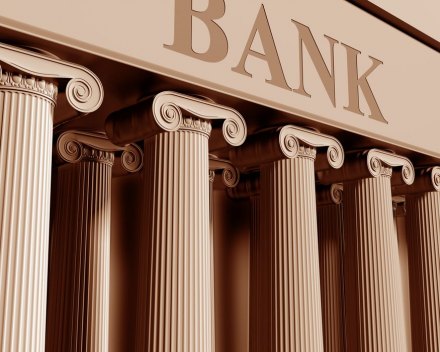What is the Glass-Steagall Act?

But what is it? This is the story we ran in January, when presidential candidate Bernie Sanders, a U.S. senator from Vermont, backed a proposal to reinstate the act.
The Glass-Steagall Act was signed by President Franklin D. Roosevelt in 1933. Below is a brief overview of the law's history:
A financial crisis: During the euphoric 1920s the stock market expanded. Everyone with a little cash wanted in, but the buying spree ended in October 1929, when the market went into a tailspin.
The Great Depression: In the aftermath of the crash and with the onset of the Great Depression, the public lost confidence in the banking system. Between 1929 and 1932, a quarter of all banks in the country failed, recounts The Complete Book of Presidents, By William A. DeGregorio and Sandra Lee Stuart, (Barricade Books; 2013).
A proposal: Sen. Carter Glass, a Democrat from Virginia, proposed a banking reform bill in January 1932, according to a history of the bill on the Federal Reserve website. The bill’s co-sponsor in the House was Rep. Henry Steagall, an Alabama Democrat. The legislation passed the Senate in February 1932 -- but the House adjourned without making a decision.Congressmen were concerned that “commercial banking operations and the payments system were incurring losses from volatile equity markets,” the Federal Reserve website said. The act's aim, the website says, was to “restrict the use of bank credit for speculation and to direct bank credit into what Glass and others thought to be more productive uses, such as industry, commerce, and agriculture.”
Roosevelt takes office: Roosevelt took office March 4, 1933, having soundly defeated the incumbent, President Herbert Hoover. The national unemployment rate was 25 percent. Within days, Congress passed the Banking Act of 1933 -- the Glass-Steagall Act.
What the laws does: The first paragraph states that act's purpose is to provide for “the safer and more effective use of the assets of banks, to regulate interbank control, to prevent the undue diversion of funds into speculative operations, and for other purposes.”Specifically, according to the Fed's history:
- Banks had one year to figure out if they were going to specialize in commercial or investment banking. (Merriam-Webster.com defines commercial banks as institutions that take deposits and make loans. Investment banks underwrite securities.)
- Just 10 percent of commercial banks’ income could come from securities. The exception: Commercial banks could underwrite government-issued bonds.
- With the creation of the Federal Deposit Insurance Corp. (FDIC), bank deposits were to be insured with money collected from banks.
- Bank holding companies were to be examined by the Fed.
Derailing the law: In 1999 the Financial Services Modernization Act, also known as the Gramm-Leach-Bliley Act, amended Glass-Steagall. The new law was sponsored by Sen. Phil Gramm, R-Texas, Rep. Jim Leach, R-Iowa, and Rep. Thomas J. Bliley Jr. , R-Virginia. Gramm is now a scholar at the conservative American Enterprise Institute and his biography on the organization's website explains that the act allowed “banks, security companies and insurance companies to affiliate through a financial services holding company.”
So why is this now controversial? Basically, politicians and pundits are arguing about whether Glass-Steagall, if left in place, could have prevented the financial crisis in 2008.It's a sensitive question because the Financial Services Modernization Act was signed by President Bill Clinton, whose wife, Hillary, is a Democratic candidate for president. Sanders, her strongest challenger for the nomination, is co-sponsoring a bill by Sen. Elizabeth Warren, D-Mass., to reinstate Glass-Steagall. “You’ve got to break up these huge financial institutions,” Sanders said during the debate Jan. 17.“They have too much economic power, and they have too much financial power over our entire economy.”
Sources:
- Archive.org: Full text --The Glass Steagall Act.
- Biographical Directory of the U.S. Congres: Henry Bascom Steagall.
- The Complete Book of Presidents, By William A. DeGregorio and Sandra Lee Stuart, (Barricade Books; 2013).
- Encyclopedia Britannica: Stock Market crash of 1929.
- Federal Reserve History: Banking Act of 1933, commonly called Glass-Steagall.
- Federal Reserve History: Carter Glass.
- Federal Reserve History: Financial Services Modernization Act of 1999.
- The New York Times: Transcript of the Democratic presidential debate, Jan. 17, 2016.
- Phil Gramm biography: American Enterprise Institute website.
- Sen. Elizabeth Warren website: The 21st Century Glass-Steagall Act.
- Senate.gov: Financial Services Modernization Act.
Related:
An interest in Sanders -- but not in socialism

